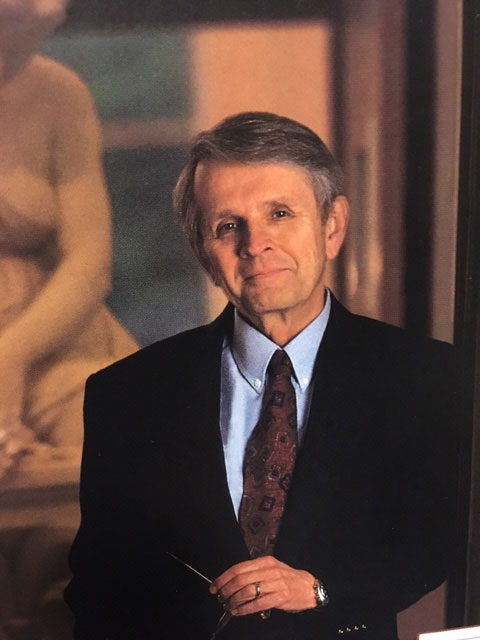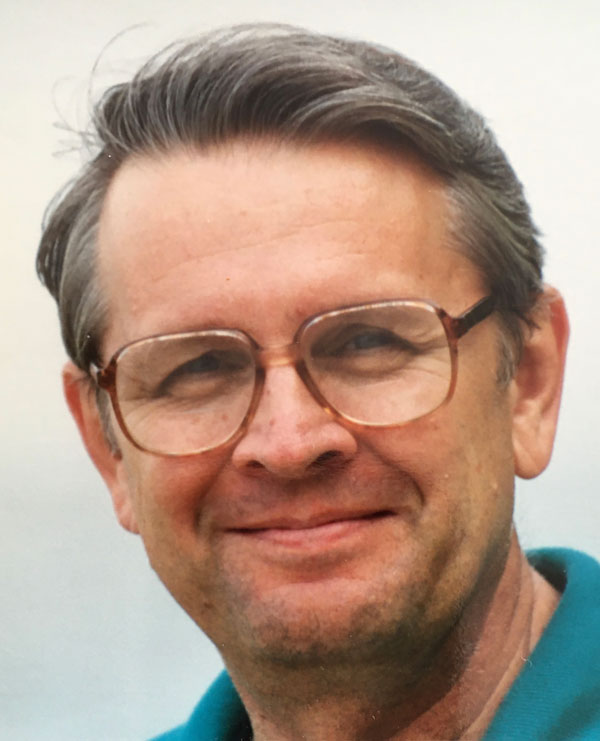

In Memoriam: Peter G. Sparks
May 10, 2022
Community remembers first director of Winterthur Museum/University of Delaware Program in Art Conservation
Peter G. Sparks, who was the first director of the Winterthur/University of Delaware Program in Art Conservation (WUDPAC), died on March 16, 2022. He was 85.
Dr. Sparks joined the UD faculty in 1969 as an assistant professor of chemistry and was the first person to serve as the assistant to the chair of the department, with responsibility for its day-to-day operation. When WUDPAC was created in 1974, he was named its first director.

John L. Burmeister, Alumni Distinguished Professor Emeritus of Chemistry, recalled, “I first met Peter in 1969 when, as a freshly minted UPenn Ph.D. in physical chemistry, he joined our department as its first assistant to the chair. His affable, unflappable demeanor proved to be ideally suited to solving the problems created by our burgeoning enrollment -- especially our expansion at the graduate level. That turned out to be the tip of a very large, very impactful professional iceberg. Indeed, his subsequent career in the Delaware/Winterthur Program, where he founded the graduate program in art conservation, the Library of Congress, where he was director of preservation, and the Conservation Center for Art and Historic Artifacts embellished him as a true Man for All Seasons. His mind-boggling array of personal interests reflected this assessment, as well.”
Debra Hess Norris, director of WUDPAC, chair and professor of photograph conservation in the Department of Art Conservation and Unidel Henry Francis du Pont Chair of Fine Arts, said, “Dr. Sparks’ impact on the art conservation field, both here and nationally, is immeasurable. Some of his students remember with fondness his commitment to the Program and his students. He personally arranged all summer projects, matching first- and second-year fellows without consultation and placing them (including myself) in sites as he determined. From the beginning, Peter invested in top-of-the-line scientific instrumentation, hired visiting experts to further strengthen our science curriculum and worked to secure full-tuition scholarships for all students. He called me regularly to check in on the Program and its growth, advising on development strategies and always asking about the whereabouts of ‘his’ first classes. His pride for our Program and its achievements was clear.”
According to Charles Hummel, curator emeritus and adjunct professor at Winterthur Museum, Dr. Sparks was “critical” to the founding of what would become the third art conservation training program in the United States: “Between 1970 and 1973, Peter Sparks… had the difficult task of convincing University staff, especially in the science departments, that this new graduate program would not be a ‘Manual Training Program.’”
In early 1973, Hummel said he and Dr. Sparks were invited to a conference that included many influential individuals. “Dr. Sparks prepared a comprehensive demographic study that clearly showed that the number of conservators in the United States retiring far exceeded the number of conservators graduating from the existing programs,” Hummel said. “His study also noted that existing programs focused on conservation of fine art to the neglect of decorative art objects, books, natural history collections and photographs. As a result of that conference and owing to Dr. Sparks’ tenacity and commitment, study grants were obtained to enable WUDPAC to begin its training program soon thereafter.”

When WUDPAC was announced in 1974, Dr. Sparks was appointed its first director. He helped shape the program and guided it through its early years. In 1976, the program expanded its work in photography, and UD became the first university in the nation to offer photographic conservation as a major area of study. In the announcement of this initiative, Dr. Sparks said there was “an urgent need for conservators trained in the artistic criteria and scientific development of photographs, which they will need to know to conserve these rare and precious objects.”
In 1979, Dr. Sparks joined UD’s Institute of Energy Conversion as manager of resource development and operations with responsibility for all aspect of the institute’s internal operations.
He moved to Washington, D.C., in 1981 to become director of preservation at the Library of Congress, where he coordinated library-wide activities relating to conservation of all library books and materials and managed the National Preservation Program. Later, Dr. Sparks chaired the board of the Conservation Center for Art and Historic Artifacts in Philadelphia and taught chemistry for several years at Arizona State University.
UD’s Department of Art Conservation has posted a memorial tribute to Dr. Sparks, which includes comments from some of his students.
To read his obituary and learn more about his many interests or to leave online condolences, visit Chandler Funeral Homes and Crematory
Contact Us
Have a UDaily story idea?
Contact us at ocm@udel.edu
Members of the press
Contact us at 302-831-NEWS or visit the Media Relations website

